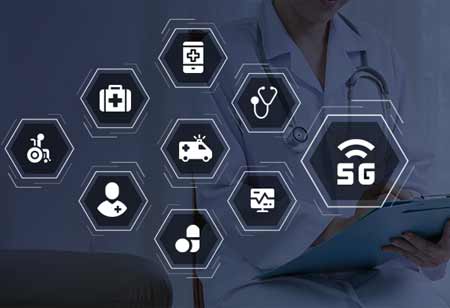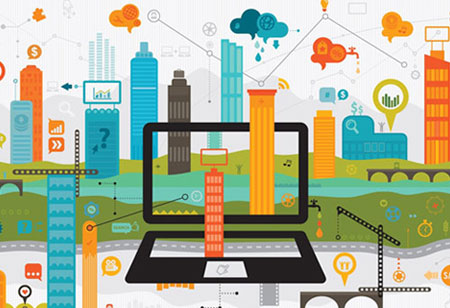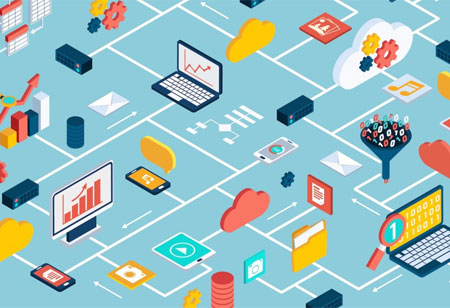THANK YOU FOR SUBSCRIBING

Top Software Testing Services

Nominate a Company
Usually, the qualified subscribers of our magazine nominate companies with whom they have collaborated and experienced exceptional results to be in this list. Did a company you recently worked with give you stellar results and ROI? Did it turn out to be one you would wholeheartedly recommend to peers? Or do you know of such an outstanding company through your network? Please fill in the details below and nominate them to be featured here.
*
Thank You!

We are glad to receive your nomination. Our editorial team and evaluation panel will review your submission. Thank you for taking the time to highlight an organization driving impactful change in APAC CIOOutlook.
Data not inserted
AL AiN is a digital quality assurance and software testing company that is located in malaysia, which empowers businesses with exceptional reliability and performance. The company’s range of services includes manual testing on-prem and cloud-based with expertise in automation, performance and security testing.
SHIFT ASIA is a leading software quality assurance and third-party verification company that provides software development and software testing services to clients worldwide. It combines quality assurance methodologies of SHIFT with the excellent engineering skills of Vietnamese developers to help clients improve the quality of their development and testing.
Vietsol Co. Ltd is an automotive engineering company in Vietnam that specializes in providing top-tier services and solutions, including automotive cyber security and testing and AI solutions for sustainable applications. The company develops and implements AI solutions with a focus on sustainable applications, storage, optimizing bandwidth and operational costs.
WISEWIRES is a Korean-based multinational software testing company headquartered with branches in Singapore, Vietnam, China, Japan and Los Angeles, CA. The company provides global services for custom software testing, QA consulting and quality management across various business domains to empower enterprises.
Top Software Testing Services
More in News
Predictions for the Hybrid Cloud
Friday, November 21, 2025
Public cloud has been the highlight of the cloud eco-system so far, and it attracts all the attention is seemingly taking away the attention of the private and hybrid cloud. However, experts predict hybrid cloud will gain importance in 2018 and beyond. IDC estimates traditional data centers this year accounted for 62 percent of IT infrastructure spending, with 23 percent of the market going to the public cloud and 15 percent going to the private cloud. By the year 2020, data centers will drop to account for 50 percent of the market with public cloud at just under one/third of the market and private cloud capturing 20 percent. Experts predict that Hybrid cloud strategies of major corporations such as Microsoft, Amazon, Google, Oracle and IBM will become clear in 2018. The coming year is set to be the year of adoption and a year to assess how much traction they will gain and what their best use cases are. As organizations move workloads to the public cloud, they're set to gain valuable knowledge about what the public cloud is used for, and what it's not. Also, the mega-trend that's driving the entire cloud computing market is enabling application developers to innovate and create new business value as soon as possible. Additionally, experts note as hybrid cloud computing becomes the routine in 2018 and beyond, establishing, managing and optimizing these connections will be a priority. And 2018 is also expected to be the year where private and hybrid cloud vendors talk about how to bring machine learning and AI capabilities in these environments.
Anticipating Cybersecurity Threats: Protecting Businesses
Thursday, November 20, 2025
Fremont, CA: Recent years have showcased several highly destructive cyber security attacks that have penetrated advanced IT systems. These incidents highlight that modern cybercriminals possess technical expertise and access to sophisticated tools, enabling them to carry out increasingly harmful attacks and breaches in the future. With Internet of Things (IoT) gaining immense traction at homes and in businesses, it might act as a pathway for these hackers to have network accessibility. Consequently, 2018 can expect immensely devastating cyber attacks. However, there are few predictive ways to be prepared to keep these threats at bay. Machine learning and AI can prove to be more effective to develop models to identify anomalous behaviors. Although AI can be a reason for major security breaches, if used positively, it can also be beneficial to build secured infrastructures and alert the users. Its efficiency depends on the design of the algorithm of the dataset from both sides. Cryptocurrency can be another area of concern. The year 2017 saw the rise of cryptocurrency, and alongside escalated interest of the criminal hackers to breach Initial Coin Offering (ICO) to take over capital to buy tokens. Thereby, cryptocurrencies can be potential threats to cybersecurity. Finally, smartphones—just with a few clicks are generating and collecting a tremendous amount of personal data. Though the data are encrypted, these smartphones have their own limitations, opening doors for hackers to decrypt the information and carry out personal damages. These are a few areas where attacks can take place, this year. Though the method of attacks is not quite predictable but considering these areas of attacks, businesses can prepare themselves for the future.
Recruitment Firms Building Future-Ready Insurance Workforces in APAC
Wednesday, November 19, 2025
Fremont, CA: The Asia-Pacific (APAC) insurance sector is navigating a period of rapid transformation driven by technological advancements, evolving customer expectations, and increasing regulatory complexities. To develop in this landscape, insurance companies must cultivate a resilient and adaptable workforce. Upskilling existing employees and attracting talent with future-proof skills are no longer optional but essential for sustained success. In this crucial endeavor, recruitment firms play a pivotal role in building future-ready insurance workforces across the APAC region. The Evolving Landscape of Insurance in APAC and the Skills Imperative The insurance industry in APAC is experiencing significant shifts. Digitalization, including the adoption of AI, machine learning, and data analytics, is reshaping core operations, from underwriting and claims processing to customer service and risk assessment. Simultaneously, customers demand more personalized and digitally accessible experiences, pushing insurers to adopt customer-centric approaches. The region also faces unique challenges, including climate change and emerging cyber threats, which necessitate specialized expertise in risk management and mitigation. These trends underscore a critical skills gap within the insurance workforce. Traditional insurance knowledge, while still necessary, needs to be augmented with competencies in data science, digital marketing, cybersecurity, actuarial modeling with advanced analytics, and customer experience management. Moreover, soft skills like adaptability, critical thinking, and problem-solving are increasingly valued in a rapidly changing environment. The Strategic Role of Recruitment Firms Recruitment firms are uniquely positioned to bridge the insurance sector’s skills gap in APAC and play a pivotal role in shaping future-ready workforces. Their contribution extends well beyond filling vacancies; they serve as strategic partners by providing industry intelligence, anticipating emerging skill needs, and offering guidance on talent strategies. With their deep understanding of evolving industry trends, recruitment firms help insurers identify the competencies required for long-term success and advise on upskilling and reskilling initiatives to prepare existing employees for new challenges. Leveraging established networks and advanced sourcing strategies, they can access diverse talent pools, including professionals from adjacent sectors such as technology and e-commerce, who bring fresh perspectives and transferable expertise. Additionally, recruitment firms deliver valuable market insights on compensation, talent availability, and best practices, enabling insurers to remain competitive in talent acquisition and retention. Importantly, they also assess cultural alignment, ensuring new hires fit seamlessly into organizational environments, which strengthens employee engagement and fosters long-term retention. By actively engaging with recruitment firms, insurance companies in APAC can proactively address the evolving skills landscape and build a workforce that is not only equipped for the present but also resilient and adaptable to future challenges. This collaborative approach will be instrumental in fostering innovation, enhancing customer experiences, and driving sustainable growth within the APAC insurance market. The ability to upskill for resilience, facilitated by strategic partnerships with recruitment firms, will ultimately determine the long-term success of insurance organizations in this rapidly transforming region.
Healthcare Transformation with 5G Network
Tuesday, November 18, 2025
According to Ericsson's latest consumer lab report, the potential transformation of the 5G network is becoming imperative in the healthcare sector as patients are beginning to demand care that is connected through applications, wearables, and telehealth. Titled ‘From Healthcare to Homecare,' the report uncovers the impact that 5G connectivity would have on the fate of healthcare and its transformation across over precaution, schedule, and post-operative care. It demonstrates that 5G will be crucial in transforming the healthcare sector, giving transmission efficiency in an ecosystem of alerts and feedback, mobility and low latency. For example, in remote health observation, wearable gadgets –, for example, heart monitors and glucose screens, require high recurrence updates of the central data repository, precisely at low rates. Specialists say that current networks can't give that needed quality of support while associating an expansive number of such devices, and they have a belief that 5G can address these challenges. Studies have shown that patients or consumers are always concerned about the dependability the devices tracking their health — which could incorporate unwavering quality of the network they're on. Along these lines, telecom operators could empower medical devices that directly connect to the internet associate rather than to depending on a patient's cell phone. Likewise, 5G is additionally anticipated to enhance connectivity. For example, 35 percent of cross-industry decision makers are looking forward to the 5G network to provide better connectivity and sub-1ms latency connections, the reason being to enable haptic feedback to support surgeons' capacities to do robotic surgery. The specimen isn't illustrative of the all-inclusive population; however, Ericsson predicts these early adopters could make way for the healthcare trends in the years to come. The second survey included 900 decision makers of the hospital. The outcomes were augmented with patient and supplier focus groups held in the US and UK.
Transformation of Urban Landscapes Through E-Commerce
Monday, November 17, 2025
Fremont, CA: As e-commerce continues to expand, cities are undergoing significant design changes. Experts predict that the incorporation of automated vehicles and drone technology will greatly enhance the efficiency of the e-commerce sector. Numerous automotive manufacturers have begun merging automated vehicles with drone delivery systems. For example, Mercedes has created an automated vehicle equipped with drones capable of flying overhead for deliveries. With technology permeating every aspect of urban life, the e-commerce industry is actively pursuing these innovations to improve delivery speed and reduce costs. The utilization of automated vehicles and drones with smaller vehicles can optimize delivery and routing and make effective use of the road space. According to experts, light vehicles will lead to more free space. With the advent of technology for automated vehicles and drones, organizations are trying to connect it with e-commerce. Customer acceptance and business models are key factors and because of which automation will continue to happen at a faster rate in e-commerce landscape. In addition to the business models and customer acceptance, government regulations also play an important role. Apart from the urban areas, the non-urban areas will also see a major prospect for automated vehicles and drone delivery in the days to come. Transport links like electric charging infrastructure will go through a drastic change as automated vehicles, drones, and electric charging infrastructure are expected to go hand in hand. With retail having a solid experiential part, e-commerce is likely to impact physical stores, and the degree to which conventional bricks-and-mortar will move to delivery following in-store shopping, and the suggestions on request, and how and where retail happens in the cities.
How is Digital Twin Technology Driving Businesses?
Friday, November 14, 2025
Digital twin technology is not a new concept, but it came to limelight only when recently Internet of Things (IoT) made it available to all, cost-effectively. Witnessing that digital twin is gaining widespread adoption in today’s businesses; Gartner listed the technology as one of the Top 10 Strategic Technology Trends for 2017. Digital twin is nothing but a virtual model of a process, product or service in an industry. The combination of the virtual and physical worlds enables the analysis of data and monitoring of a system’s functioning to develop solutions for any potential problem, proactively. The technology also helps in minimizing downtime, creating new opportunities, while helping in planning product innovations by using simulations. With digital twin technology, businesses can examine every step of the product transformation—from development phase to design and testing. How does digital twin technology actually work? The technology utilizes smart components that use sensors to extract real-time data of the physical model. These components later send the collected data to the other side through a cloud based system, where required insights are gathered using data analytics. Outcomes are optimized by a steady transfer of data. Not just the real-time data, but digital twin also makes use of the historical data to develop the most useful predictive analytics. To know the future needs and issues during the product development phase and respond accordingly, digital twin amalgamates artificial intelligence, machine learning, and data analytics. It helps businesses to predict the problem even before it caused in the physical system. It is an optimal way to scrutinize performance within minimum time and capital.
I agree We use cookies on this website to enhance your user experience. By clicking any link on this page you are giving your consent for us to set cookies. More info

























